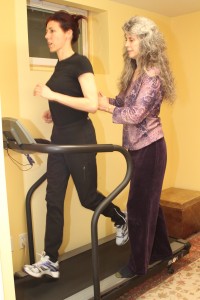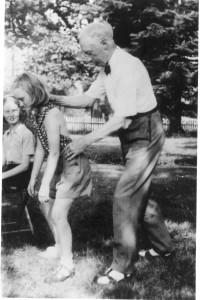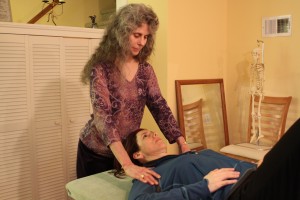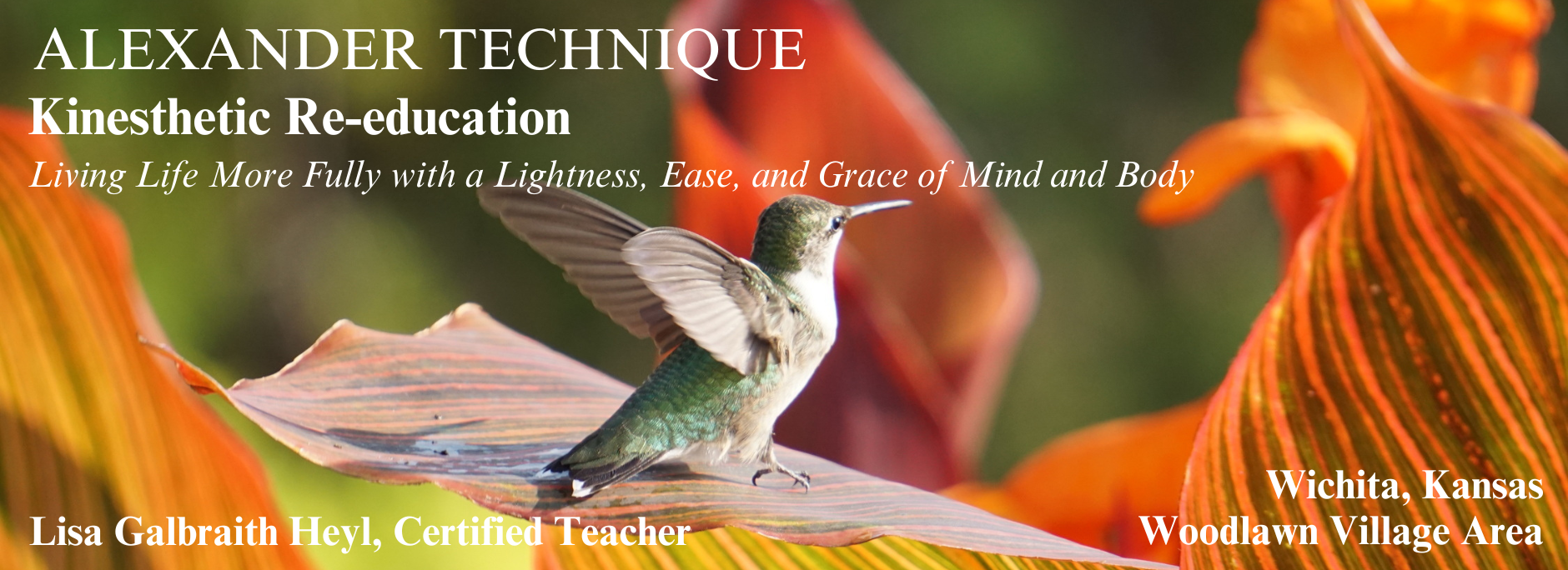 The Alexander Technique is a process of kinesthetic re-education, integrating our mind and body so that our thinking and movement become one activity. This brings about an innate lightness, ease, and grace of mind and body and an economy of movement and effort.
The Alexander Technique is a process of kinesthetic re-education, integrating our mind and body so that our thinking and movement become one activity. This brings about an innate lightness, ease, and grace of mind and body and an economy of movement and effort.
The Alexander Technique is over 100 years old and is taught at performing arts centers including the Juilliard School, American Conservatory Theatre (ACT), London Academy of Music and Dramatic Art, and many universities and colleges around the world. Doctors, chiropractors, physical therapists, and other therapists may refer their patients to an Alexander Technique teacher for neuro-muscular-skeletal re-education, i.e. the Mayo Clinic, John Hopkins, and Craig Bowon, MD and internist in the Twin Cities.
Well-known figures in a variety of fields have studied the technique: George Bernard Shaw, John Dewey, Aldous Huxley, Paul Newman, Kevin Kline, William Hurt, Nikolaas Tinbergen, winner of a Nobel Prize in Physiology/Medicine, and Sally Swift, riding instructor and author of Centered Riding.
 The Alexander Technique re-educates mind and body simultaneously while we are engaged in any activity. This re-education is facilitated with the Alexander Technique teacher’s gentle hands-on instructions and three key components:
The Alexander Technique re-educates mind and body simultaneously while we are engaged in any activity. This re-education is facilitated with the Alexander Technique teacher’s gentle hands-on instructions and three key components:
Awareness – becoming aware of unconscious habits that may cause unnecessary tension, stress, and injury.
Positive inhibition – learning to stop giving consent to habitual responses. This allows the innate or natural integrity to function and new constructive choices to be made.
Constructive thinking and direction – using Alexander’s conscious directions while we are engaged in any activity: walking, sitting, standing, driving a car, working at a computer, sports, singing, riding, cooking, speaking, performing, and more.

F. M. Alexander, the founder of the Alexander Technique, called this process means whereby, in which one uses one’s innate kinesthetic integrity to achieve any goal. In our society we find another process more prevalent, which Alexander called endgaining, where the end is more important than the integrity of the means. By engaging in endgaining, we often misuse our innate integrity, which can bring about discomfort and “dis-ease.”
The Alexander Technique allows us to be cause in our lives, rather than the effect of our unconscious choices. It can enhance all we do and help us create a better quality of life. Through the Alexander Technique we learn to live more fully and consciously in each moment with a greater ability to respond to the diverse stimuli of life.
Photograph of F. M. Alexander
© 2011, The Society of Teacher of the Alexander Technique, London
Benefits:

Every man, woman and child holds the possibility of physical perfection; it rests with each of us to attain it by personal understanding and effort.
– F. M. Alexander
Students have reported the following benefits:
- Release of excess tension, discomfort, pain, and stress
- Quicker recovery and rehabilitation from injuries
- Integration and re-education of mind and body
- Better balance, coordination, ease, and quality of performance
- Increase in energy, flexibility, range of motion, awareness, attention, and focus
- Enjoying life more and experiencing more creativity and spontaneity
- Changes in mental attitudes, moods, and the ability to make healthier choices
- Conscious use of innate direction and integrity to replace unconscious misuse habits
- Improved vision, breathing, mental clarity, health, sleeping, and posture
- Less anxiety
- More open to learning new skills and activities; more confident
Click here for some quotes by well-known individuals on the benefits.
Articles on the Alexander Technique:
- The Alexander Technique – A Brief Overview – by Lisa Galbraith Heyl (a printable version of the information on this page)
- The Alexander Technique from a Teacher’s Perspective – by Lisa Galbraith Heyl
- The Great Alexander – by Craig Brown, MD, Twin Cities’ Internist, published by the Minnesota Monthly, March 2009
- Large-scale Study on the Alexander Technique and Back Pain – published in the British Medical Journal, August 19, 2008
- Excerpt from Back Trouble by Deborah Caplan – by Neurosurgical Director Jack Stern, M.D. Ph.D.
- A Dramatic Cure for Back Pain – published in O, the Oprah Magazine, April 2009
- When Ibuprofen Won’t Cut It – published in O, the Oprah Magazine, August 2010
- Five Pieces of Advice Everyone Ignores (but Shouldn’t!) – Martha Beck, published in O, the Oprah Magazine, October 2012, p. 64
- The Alexander Technique: An Alternative Therapy for Back Pain – Johns Hopkins Health Alert, October 2011
Videos on the Alexander Technique:
- Mayo Clinic Video about the Alexander Technique
- British Medical Journal Back Pain Study Video
- The Alexander Technique: Musician’s Method for Improvement
Additional Information:
- Frequently Asked Questions (from the American Society for the Alexander Technique)
- The Complete Guide to the Alexander Technique – the most comprehensive resource for information about the Alexander Technique worldwide
Suggested Reading:
- How You Stand, How You Move, How You Live – Missy Vineyard
- The Elements of Skill: A Conscious Approach to Learning – Theodore Dimon, Jr.
- How to Learn the Alexander Technique – Barbara Conable & Bill Conable
- The Complete Illustrated Guide to Alexander Technique: A Practical Program For Health, Poise, and Fitness – Glynn Macdonald
- The Alexander Technique – Judith Leibowitz & Bill Connington
- Thinking Aloud – Walter Carrington
- Body Learning – Michael Gelb
- Back Trouble – a new approach to prevention and recovery – Deborah Caplan, P.T.
- The Anatomy Coloring Book – Wynn Kapit / Lawrence M. Elson
